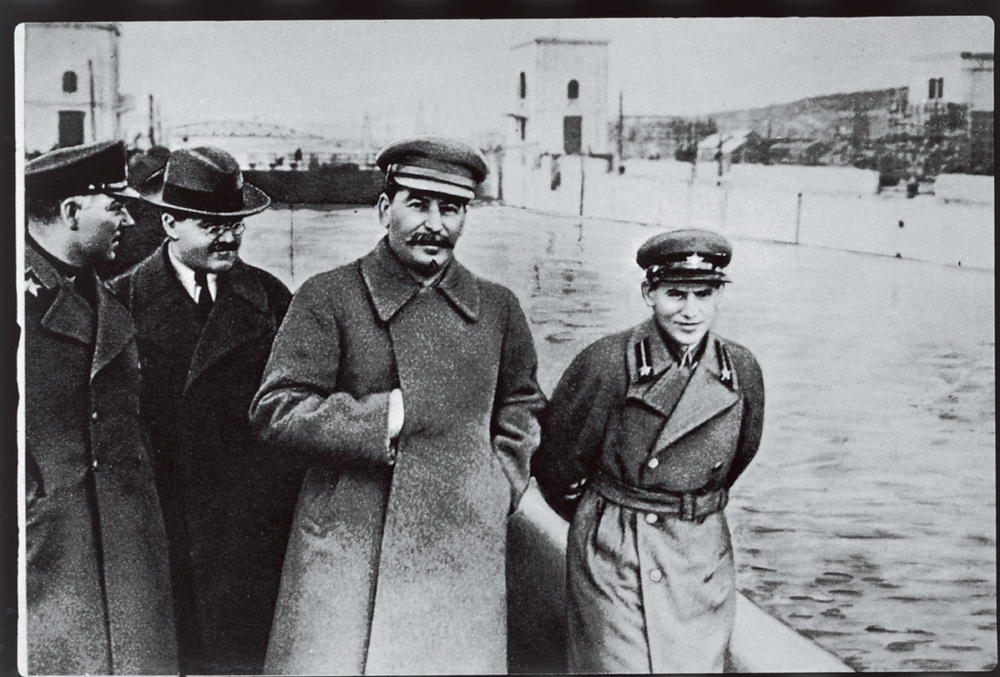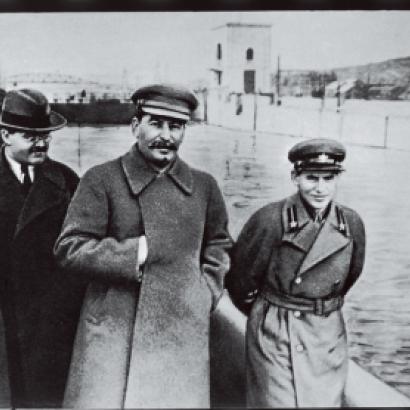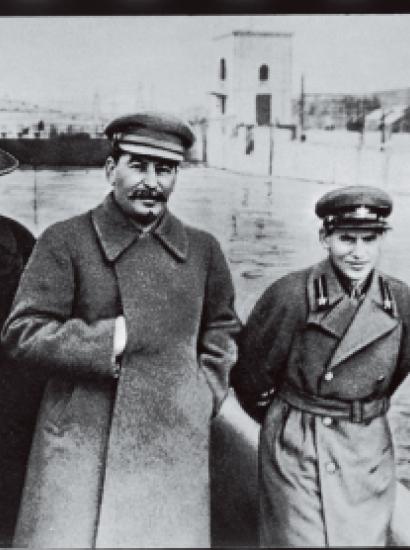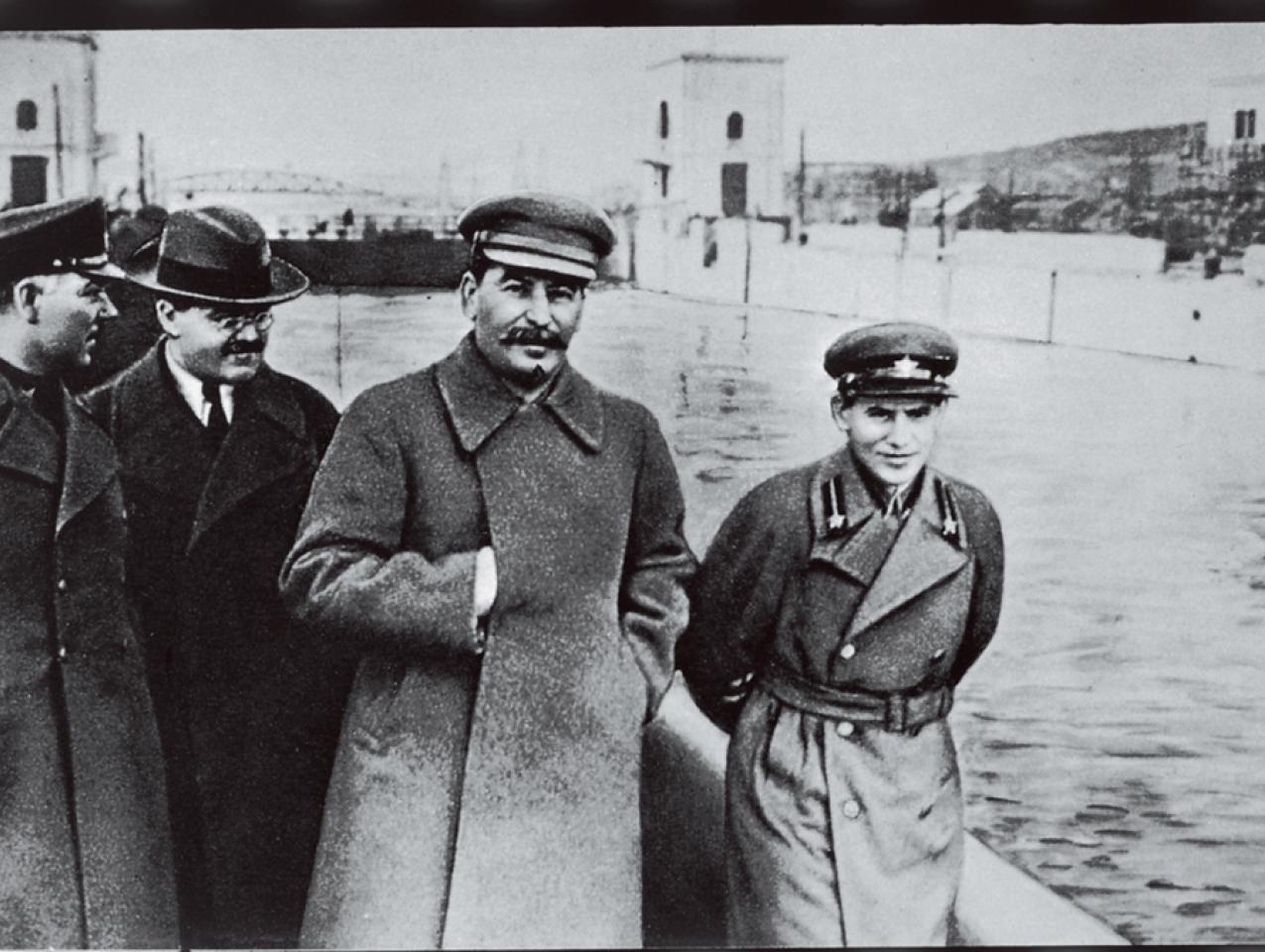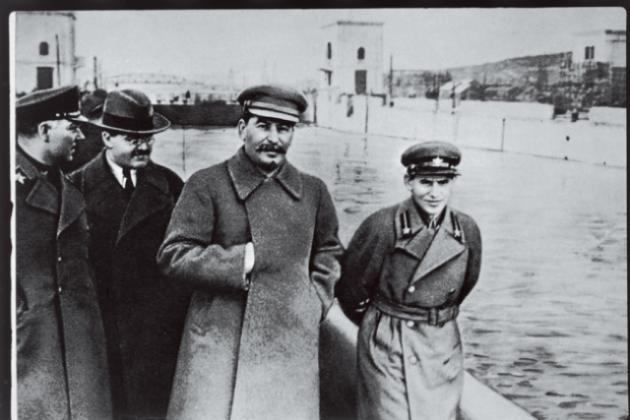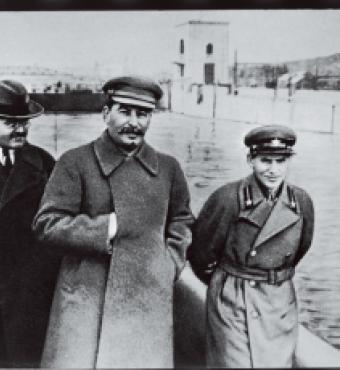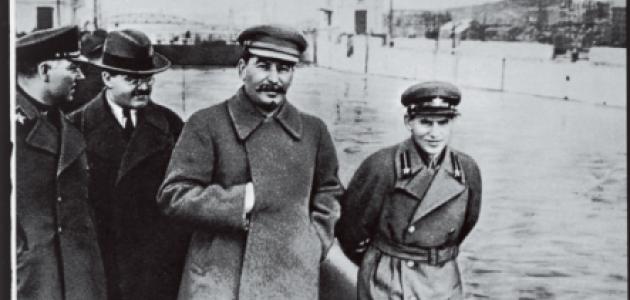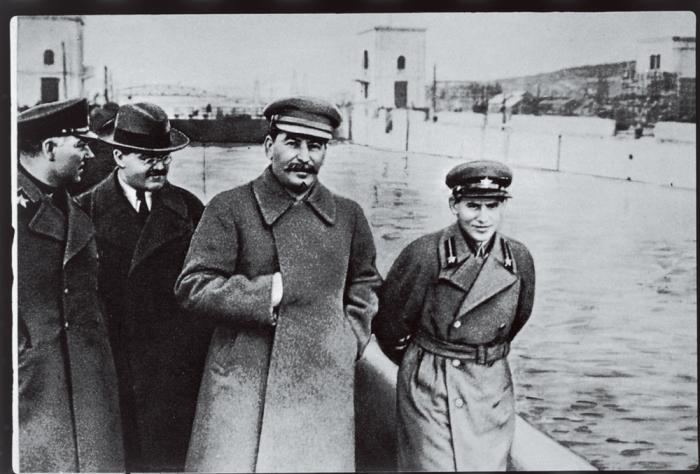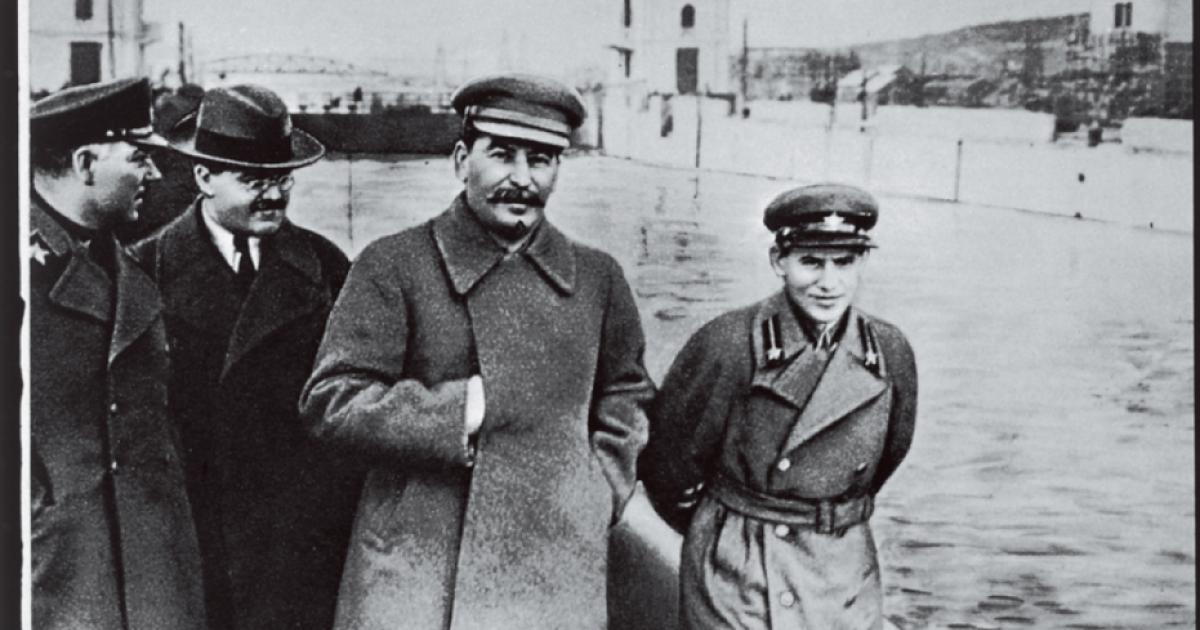- History
Editor’s note: The following essay is an excerpt from the new Hoover Press book One Day We Will Live Without Fear: Everyday Lives Under the Soviet Police State.
The cell is packed and airless. Night falls, but no one sleeps. Whose turn will it be? You wait. In the small hours the guards come to the door. They call your name; it’s your turn. You say goodbye as you step over the others. The guards march you down into the basement. They push you through a doorway. The executioner steps behind you and fires a bullet through the back of your head
Stanislav Bronikovsky escaped a death like that in 1937. Accused as an “enemy of the people,” he was arrested and imprisoned. Suspicion alone was enough to condemn most of those detained in that year. Stanislav was lucky to be still alive when the executions were halted for a time. He was released for lack of evidence.
A few years went by, and then Stanislav was detained again. He had not intended any harm, but this time there was compelling evidence against him: it seemed that he had betrayed his country to Japan. Nothing could prove his innocence. He might have thought he was a victim of the worst luck in the world.
On April 24, 1943, Stanislav was tried and sentenced to death. Two days later the guards took him down to the execution cellar.
Stanislav was just fifty when he was killed. The name Stanislav, which means a person destined for fame or glory, is not uncommon in Russia, but it is originally from Poland. This particular Stanislav was originally Polish, born in Warsaw at a time when Poland was a province of the Russian Empire. Now he was a Soviet citizen living in Khabarovsk, which is six thousand miles from Poland and about as far as you can go from Warsaw in any direction without crossing an ocean. More exactly, Khabarovsk is in Russia’s Far East, close to the Pacific and sitting on top of the Chinese border. How and why Stanislav made this long journey is not recorded, but at the time he lived in Khabarovsk he was working as a building engineer.
Stanislav never knew the truth of the events that led to his death. He was not a victim of bad luck; he was the object of a game. The game was devised and played by the Soviet Union’s top secret policemen. Its officers were certainly ambitious and most likely bored. They played the game to show they were doing something and perhaps to have something to do. The Japanese were irrelevant; they played no part in the matter at all.
***
By the end of 1941, almost the entire northern hemisphere was at war. Deadly fighting was in progress across Europe, around the Mediterranean Sea, and over and under the Atlantic. Warfare in China had exploded into the Pacific.
In a world at war there were not many major frontiers where neighbors were still at peace. One of the few peaceful frontiers ran between the Soviet Union and the Japanese colony of Manchuria (modern Heilongjiang Province in northern China). The fact that this frontier was peaceful might be thought surprising. Japan’s military leaders, who were steeped in violent nationalism, had spent much of the interwar period gazing across the sea to the natural wealth and empty spaces of Siberia, calculating their chances of detaching that territory from the young Soviet state. In 1931 the Japanese Army occupied Manchuria, bordering Siberia to the north. In 1939 the Japanese fought a border war with the Red Army. Although undeclared, this was a major conflict involving pitched battles with tanks, planes, and thousands of casualties on each side.
Losing that war, the Japanese gave up on Siberia. They switched their efforts to consolidating control of the Chinese mainland. They also went to the south, looking for the softer targets represented by British, French, and Dutch colonial possessions in Southeast Asia. There the US Navy stood in their way. This is how Japan’s turn away from Siberia led directly to the surprise attack on America’s Pacific Fleet in Pearl Harbor on December 7, 1941.
A few months before Pearl Harbor, in April 1941, the USSR and Japan concluded a treaty of neutrality and nonaggression. This treaty held, miraculously, until August 1945. It lasted so long for a simple reason: while Japan was fighting America and the Soviet Union was fighting Germany, neither country wanted another war.
On the Soviet side of the peaceful Manchurian border, the town of Khabarovsk was the last major eastbound stop on the TransSiberian railroad before Vladivostok and the Pacific coast. Founded as a garrison town in the previous century, Khabarovsk was now the headquarters of the Far Eastern military district. Its central quarter had imposing municipal buildings, with broad streets and squares for marching and parades. On the outskirts an industrial region was growing up, with workers packed together in dormitories and barracks.
In Khabarovsk all was quiet and the war was a long way away. To find the war from Khabarovsk you would have to travel five thousand miles to the European front in the west, or more than a thousand miles south to central China where China’s Nationalists were locked in a struggle with the Japanese Army.
Like every Soviet city, Khabarovsk had a local office of the NKVD. “NKVD” stands for the Soviet ministry of the interior; the senior branch of this ministry was the secret police, responsible to Moscow for the loyalty of the local population. Put yourself in the shoes of the local NKVD commanders. With the world in flames you sat on the frontier, but this was the quietest frontier city in the country. In fact, here was the only border where nothing was happening. How could you prove to Moscow that you were doing your job? How could you distinguish yourself, when all the excitement was somewhere else? Perhaps, also, how could you overcome the maddening tedium of provincial life, with only work and vodka to fill the evenings?
Chief Goglidze of the Khabarovsk NKVD found the answer: he would put on a play.
***
Thickset and saturnine, Sergei Goglidze was in his early forties. Georgian by birth, he joined the Bolsheviks young and fought for them in Russia’s Civil War. After that, he rose quickly through the ranks of the Soviet border troops and security police to become interior minister of the Transcaucasian Soviet Republic. The Transcaucasus, so called because the region is separated from Russia by the Caucasus Mountains, was one of the Union Republics of the USSR from its foundation in 1922. In 1936 the Transcaucasian Republic was split into three: Georgia, Armenia, and Azerbaijan. Goglidze became the first interior minister of Soviet Georgia.
Goglidze’s career brought him from the outer edge of the Soviet empire to its center. He advanced through his relationship with Lavrenty Beria, who was Stalin’s man in the Soviet Transcaucasus and acted as leader of the Transcaucasian and Georgian Communist parties. Later, Beria commanded millions of forced laborers and ran the Soviet Union’s atomic bomb project. He had a receding hairline and rimless spectacles. These gave him a passing resemblance to another famous mass murderer, a similarity that Stalin recognized by calling him “my Himmler.”
Along the way, Beria became Goglidze’s patron. According to one story, the relationship was based on a guilty secret: when Goglidze joined the Bolsheviks he lied about his family background. He claimed to be from the rural poor when in reality his parents were classified as kulaks. “Kulak,” meaning a clenched fist, was a traditional term of abuse for the richer (and supposedly tight-fisted) farmers. The Bolsheviks adopted this term, inciting the rural poor to wage class war against their more prosperous neighbors. In 1930 Stalin ordered the kulaks to be expelled from the villages and resettled in Siberia while the remaining peasants were forced into collective farms. As there was no clear definition of who was a kulak, any farmer who resisted could fall under suspicion. If Goglidze was suspected of a kulak family background, he hid the fact. Exposure could have ended his career. Beria knew Goglidze’s secret, and kept quiet in return for Goglidze’s absolute personal loyalty.
Goglidze’s path to Moscow was opened by the Great Terror of 1937. The year before, in 1936, Stalin put Nikolai Yezhov in charge of the NKVD, giving him the assignment with which his name would be forever associated: to carry out the Great Terror. Even today Russians sometimes call the Great Terror Yezhovshchina—the “Yezhov business.” Through Yezhov, Stalin managed two waves of mass imprisonment and killing, one public and the other secret. In public, tens of thousands of citizens were put on trial as “enemies of the people,” many of them former members of the Soviet political, cultural, and scientific elites. The “enemies” were accused of espionage, sabotage, and murder, usually in coordination with foreign enemies. Crushed by psychological pressure and torture, most confessed; all were found guilty and sentenced to long terms of imprisonment or execution. The show trials demonstrated to the public how its enemies were encircling the Soviet Union’s borders and infiltrating its councils and how everyone should be on guard against the smallest signs of treachery.
The Great Terror also had a secret aspect, the “mass operations” and “national operations” of the NKVD that Stalin launched in the summer of 1937. The secret victims outnumbered the public victims by an order of magnitude. The public trials condemned tens of thousands, but the secret operations detained 1,600,000 people in a few months; nearly half of them were executed and the remainder were sentenced to long terms of imprisonment for “counterrevolutionary crimes.” The purpose of the secret operations could not have been to intimidate or deter anyone, for that purpose would have been defeated by secrecy. Their purpose was to eliminate forever the people whom Stalin and his security advisers considered to be the misfits of Soviet society: the proven enemies, the security risks, those with whom there could be no reconciliation because of their origins, their past actions, or the sense that they could never be relied on.
Nowhere was safe. In Georgia, where Lavrenty Beria ran the party and Goglidze ran the NKVD, around 12,000 were arrested; most were executed.
In early 1938, Stalin brought the Great Terror to an end. Now he faced the problem of what to do with the executioners. Soaked in blood, Yezhov had become a liability—and not only Yezhov but all “his” men. In April, Stalin brought Beria from Georgia to Moscow and made him Yezhov’s deputy, responsible for state security. Beria brought his own men with him, including Goglidze. This saved Goglidze, who might otherwise have gone down soon afterward with many of Yezhov’s other executioners. It also brought him to the center of Soviet politics.
In the following months, Yezhov’s men were gradually moved out of the NKVD while Beria’s men moved in. Yezhov found himself isolated. In November, he was demoted from minister of the NKVD to something much less important: minister for water transport. Beria took his place in the NKVD. Yezhov was arrested in April 1939, charged with organizing a counterrevolution. He was shot in February 1940. Meanwhile, nearly one thousand NKVD officers were arrested, including most of the regional bosses at Goglidze’s level.
Protected by Beria, Goglidze prospered. At age thirtyseven, he found himself head of the NKVD in Leningrad, Russia’s second city. For many upwardly mobile young men of his generation, this was a moment of opportunity because the terror, having created so many vacancies for them, now subsided, leaving them in place to consolidate their new authority.
In Leningrad, Goglidze got to work, which meant first of all cleaning out Yezhov’s men. Then, in April 1941 Goglidze was sent to the borderland republic of Moldavia, which the Soviet Union had seized from Romania the previous year. On this new territory he organized mass arrests and deportations of the people thought likely to be hostile or unreliable. He might have expected some reward for this, but further advancement was mysteriously denied. His rise might have seemed unstoppable, but suddenly it stopped. When war broke out in June, he was sent as far from Leningrad as it was possible for anyone to go without leaving Soviet territory: five thousand miles to the Far East. There, he became head of the NKVD for Khabarovsk.
Goglidze’s career had brought him from the periphery of the empire to the center—and back to the periphery. Why? It’s not clear. On the plus side, no one knew at that stage whether the Far East would remain quiet. If it blew up, Goglidze would become the central figure on the Far Eastern home front. But there was a clear minus, which everyone surely understood: in this most centralized of states, the place to be was at the center. And Goglidze would be stuck in Khabarovsk, far from the center, through the war and long after the war was over—in fact, for ten long years.
***
Who were the targets of the Great Terror? Stalin aimed the terror first of all at the hundreds of thousands of people who were embittered because the revolution had taken away their property, status, or liberty. These were the people already listed in NKVD files. If anything was going to go wrong, they would be the “usual suspects.” But this was not all. Stalin took aim also at the wider circles of people who were not disloyal, but whose loyalty was skin-deep: they supported Soviet rule perhaps only when it benefited them directly, or when it went unchallenged.
A compelling interpretation of the Great Terror is that Stalin correctly foresaw what was coming—a huge war that would break out with Germany if not with Japan. Such a war would face millions of Soviet citizens with a choice. Would they fight for Soviet rule? Or would they oppose it, either actively or passively by adopting an attitude of waitand-see? In Stalin’s calculus, it was best to find the waverers and kill them now: not only the actual, conscious enemies, but the unconscious ones. How could you be an enemy unconsciously, without knowing it? The unconscious enemies were those who would break faith with the revolution and go over to the enemy in a future war, even if they thought of themselves as loyal now. Better find them and kill them first, while they were only potential traitors, before they had done any harm, rather than wait for them to turn into real traitors when they could do critical damage.
How could you know who was a potential enemy? You couldn’t be certain, so you had to guess. What Stalin did was to guess, based on broad classes of people who might be thought to have a tendency to disloyalty on average. The guesses he made provide a key to the fate of Stanislav Bronikovsky. For Stanislav was a member of two such broad classes. One, he was born in Poland, now a foreign country and a hostile power. Two, the revolution had already imprisoned him once. On that first occasion he had been released after a time. His case did not come up for trial until the Great Terror was dying down, so he was still alive to be released “for lack of proof of guilt.” Perhaps he had been a loyal citizen before his first arrest. But was he loyal afterward?
In effect, the NKVD had already formulated one of the answers to a question that the sociologists Alex Inkeles and Raymond Bauer asked in a classic survey of Soviet war refugees in Europe and America in the early 1950s. The question was: what made people hostile to Soviet rule? Inkeles and Bauer created a measure of underlying antiSoviet feeling, and looked for influences in their respondents’ life histories. Their research showed that the single most important factor associated with this hostility was “experience of arrest by the secret police of oneself or a family member.”
By imprisoning him once, Soviet rule had handed Stanislav a grudge against the Soviet state. Was he now a potential enemy? How would he behave under pressure? Given the opportunity, would he betray the motherland?







